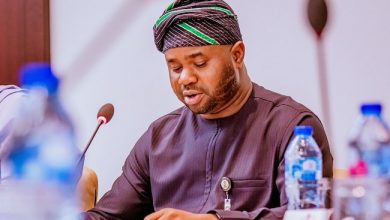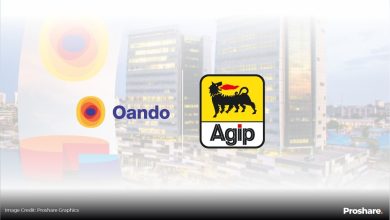Q3 ,2021 : CHINKS IN THE ARMOUR OF DANGOTE CEMENT PLC

Smart strategic choices ,an understanding of the basis for future strategy as well as option for developing strategy, is critical for a strong performance in the corporate world . Skillfully , Dangote Cement’s management has displayed this to gain its foothold of the industry market leadership position . . This is evident in the seamless strategic fit between its market opportunities and its resources as well as its ability to leverage resources to improve the value for money. And the outputs of this are the strong reputation of its brand , excellent service delivery and product innovation which are critical success factors that drive its massive revenue power and leviathan market value .
However, despite the above strategic understanding , the management is believed to be self-destructing itself tactically. .For instance , its negative working capital and high level of debt are the key chinks in its armour or strategic choices ; and these are the threats to optimizing its potential profitability and operational efficiency /
A detailed insight into its Q3, 2021 results captures the above views. Overral, as indicated above ,Dangote Cement ,no doubt, depicts a picture of a formidable company, yet due to what is believed to be a tactical error an underperforming company ; on the Nigerian Stock Exchange today like MTN Nigeria another listed company with frightening profile and traits of a champion, its market capitalization worth over one trillion Naira; and most importantly ,both remain the only two listed companies as at today with a record of a revenue of N1trn
A look into its 9-month results shows that despite a difficult macroeconomic environment., Dangote Cement remains invincible to competitors ; its 9month 2021 result shows double-digit revenue growth; it demonstrated resilience in its operations which translated to significant improvement in its earnings.
Its revenue inched up Y-o-Y massively by +34.24% to N1.02trn from N761.44bn in 9months 2020.This is reflected in its sales volume which rose moderately by +15.40% to 22.16 MMT in 9months 2021 from 19.21 MMT
Both its revenue and sales volume translated heavily into a gross profit of N618.79bn in 2021 from N443.90bn in 9months 2020, a 39.40% increase Y-o-Y. .Relative to its gross profit , from its nine month 2021 results its cost of sales moved up only by +27.04% to N403.39bn from N317.54bn in 9months 2020 to give the company greater paces in gross profit
Dangote Cement fundamentals statistics summary shows its market capitalization is ₦4.76t, Trailing twelve Months [TTM ] earnings ₦342.23b and Trailing Twelve months revenue ,₦1.29t Its Price Earning Ratio is 12.5x while price to sales ratio is 3.3x
The above is ,indeed , a brilliant scorecard .; but some analysts believe this could not be attributed solely to its managerial ingenuity but also to the unique structure of the industry..Since oligopolistic firms try to avoid price competition and there is a huge interdependence among firms, it is not easy to unilaterally change price . Even an attempt to do that last year raised an eyebrow from the general public as they Dangote and others wanted to exploit the power of oligopolistic structure . For this , selling costs are highly important for competing against rival firms for a larger market share and the knowledge of this by the management of Dancem prompted it to control costs, a joker that delivered whooping gross profit above
However , some analysts were not that excited because of whooping revenue generation and gross profit because of the oligopolistic nature of the industry . Under Oligopoly, it is easier to grow revenue massively as there are a few large firms . In Nigeria, there three companies in the cement industry and Dangote Cement controls greater market share near to monopoly level .Moreover , under oligopoly, with a strong management , a firm can earn super-normal profits in the long run as there are barriers to entry like patents, licenses, control over crucial raw materials, etc. These barriers prevent the entry of new firms into the industry and gives them to expand their revenue base .. Dancem is exploiting this advantage in Nigeria . ;with its strategic forward and backward integrations Dancem has been able to firmly maintain its hold in the industry and grow its revenue .
But one thing is to expand the revenue base another thing is to possess world-class operating skills that deliver better net income Although , impacts of external environment ,internal resources and competencies as well as the expectations and influence of the stakeholders on strategies are critical ,key to better bottom line is how component parts of the organization deliver effectively in terms of the resources ,processes and people .
A look at certain performance indicators shed some light on the strength and weakness of Dangote cement . Although Dangote Cement made a whooping amount of revenue to the tune above a trillion, the cement manufacturer’s asset turnover ratios has not been impressive ;it is was stable at 0.44 between 9month 2017 to 9months 2020 ; for 9months 2021 it was 0.50 compared to 0.44 in the corresponding period of 2020 reflecting the steady rise in the revenue of DANGCEM However, while this indicates an uptick in asset efficiency ,it remains below an average standard that will not raise an eyebrow . The higher the asset turnover ratio, the higher the efficiency of the assets ; a higher number indicates that you’re using your assets efficiently. For instance, an asset turnover ratio of 0.50 means you’re generating 50k of sales for every Naira of assets Dangote cement has. Broadly, most analysts consider a ratio of above 1.0 to be good . In a nutshell , Dancem is not that resources,not efficient user of assets .
Liquidity -Tight
No doubt , the liquidity position of Dancem is tight and may have difficulty in settling its current bills or debts . Although the group’s acid-test ratio (or quick ratio) rose to marginally 0.56 in 9months 2021 from 0.50 in 9months 2020, the quick ratio has not been stable over time and very much a manageable average .. A quick ratio of 1 would be preferred for a manufacturing company, which indicates that the company has ready assets to cover current liabilities after taking out inventories. It has been like this in the last few years .The group had the highest quick ratio of 0.61 in 9months 2018 while 9months 2019 records the lowest quick ratio of the company in recent times Like wise ,its current ratio as at 9moth 2021 is 0.73 .This is less than 1 too ‘; quick ratio is more conservative Both ratios are helpful for any financial analysis, but if you’re more concerned with covering short-term debt within the next 90 days you should use the quick ratio. For a longer-term view of a company’s liquidity, the current ratio provides a well-rounded view of assets vs liabilities
Another chink in its armour is its high debt burden .Its debt to equity ratio is 60.0% ; this is considered by analysts to be high .DANGCEM’s debt to equity ratio has increased from 51.7% to 60% over the past 5 years. However ,its debt is well covered by operating cash flow at 107.5% .Also , DANGCEM’s interest payments on its debt are well covered by EBIT (17.3x coverage).
The high debt voltage is ,no doubt, proving dangerous .In the last nine months both its Finance income nearly turned spoilers .While its finance income fell Y-o-Y by -24.44% to N13.85bn from N18.33bn ,its finance cost skyrocketed by +41.96% to N48.69bn in 9months 2021
In a nutshell, , DANGCEM has always had a high-interest coverage ratio, indicating that despite its high debt profile, its earnings cover its finance cost significantly. An interest coverage ratio of 3 would indicate that the company could meet its debt obligations and still have some liquidity left. For Dangote Cement, in 9months 2021, the interest coverage ratio rose from 10.35 to 10.57, indicating that the company’s earnings can pay interest on its debt over 10 times But this could also mean that the company did not use its debt properly or it decided to invest in new products and technology even though Dangote Cement is a market leader.
Another sore point in Dancem financial health is its negative working capital . The limestone crusher’s working capital continued in its negative trend, reflecting that the company’s current liabilities have steadily been higher than its current ratio. The negative capital continues to grow even though growth in current assets outpaced growth in current liabilities in 9months 2021 (see chart 6 below).
A healthy business will have ample capacity to pay off its current liabilities with current assets. A ratio of above 1 means a company’s assets can be converted into cash at a faster rate. The higher the ratio, the more likely a company can honor its short-term liabilities and debt commitments.
A higher ratio also means the company can easily fund its day-to-day operations. The more working capital a company has, the less it’s likely to have to take on debt to fund the growth of its business.
A company with a ratio of less than 1 is considered risky by investors and creditors since it demonstrates that the company may not be able to cover its debt if needed. A current ratio of less than 1 is known as negative working capital.
PROFITABILTY
Its dropping finance income and high rising finance costs are basically its fortune eaters. Without those two potential spoilers , Dancem profit outlook would have been better .This is manifested in its impressive Earnings Before Interest ,Tax ,Depreciation and Amortization .EBITDA , a rawer, clearer indication of your earnings. , that edged up exponentially by +45% to N514.79bn from N355.02bn in 9months 2020 .Its EBITDA margin, a measure of a company’s operating profit as a percentage of its revenue, followed the same impressive trend as it increased to 50.40% from 46.60% .
The positive transmission of the above could be sustained in its Profit before tax (PBT) increased Y-o-Y by +49.10% to N405.49bn from N271.96bn in 9months 2020 .
Though , after all deductions including paying a tax man its profit grew by 33% to N278bn from N209 Billion ;its nine-month performance however shows a negligible 0.9% increase to N278 billion from N276 billion
DANCEM’S MARKET PERFORMANCE
.Dangote Cement plc is a highly valuable company ‘; this is evident in the relative price of its stock driven by certain fundamentals. Market analysts’ observations and rewards analysis shows Dangcem as at last week was trading at 9.9% their estimate of its fair value; some analysts noted that DANGCEM (NGN252) is trading below their estimate of fair value of N279.71 However , though trading below fair value, but not by a significant amount. its earnings which have grown 13.5% per year over the past five years is adjudged impressive and considered a positive signal . Its Earnings Per Share of 20.13,gross margin ,59.44% and net profit margin is 26..43% ; all these are critical fundamentals driving its market performance
However , this optimism is countered with its high debt level and unstable dividend track record considered by them to be risky too .
Dangcem closed its last trading day (Friday, December 10, 2021) at 252.00 NGN per share on the Nigerian Stock Exchange (NGX). Dangote Cement began the year with a share price of 244.90 NGN and has since gained 2.9% on that price valuation, ranking it 59th on the NGX in terms of year-to-date performance. Investors ,according to some analysts were warned to however, take caution of DANGCEM’s recent bad performance, having lost 10% of its value in the past four weeks.
Dangote Cement is the 74th most traded stock on the Nigerian Stock Exchange over the past three months (Sep 13 – Dec 10, 2021). DANGCEM has traded a total volume of 16.6 million shares—in 3,674 deals—valued at NGN 4.28 billion over the period, with an average of 262,926 traded shares per session. A volume high of 4.2 million was achieved on September 30th, and a low of 14,184 on September 16th, for the same period. The table below details the last 10 trading days of activity of Dangote Cement on the Nigerian Stock Exchange.
A detailed analysis of Dancem’s market performance is a mixed bags of positive and negative signals .
SHAREHOLDER RETURNS
A view of its past performance shows its shareholder return of 26.6% underperformed the industry average of 34.9% over the past year but exceeded the NG Market which returned 17.2% over the past year.
STOCK EARNINGS GROWTH RATE
DANGCEM’s earnings have grown by 13.5% per year over the past 5 years ; its earnings growth over the past year (34.4%) exceeds its 5-year average (13.5% per year).
DANGCEM earnings growth over the past year (34.4%) underperformed the Basic Materials industry 54.2%. .. The stock is considered a poor value based on its PEG Ratio (4.7x)
INVESTORS’ PERCEPTION
The optimism of the investors could be seen on its PB Ratio (4.8x) indicating its stock selling at premium compared to the XF Basic Materials industry average (1.6x). Moreover , its its PE Ratio (12.5x) compared to the African Basic Materials industry average (11.4x) and the NG market (7x). shows investors are willing to pay more to procure every share of Dangcem .
The above optimism may not be farfetched . Current Dividend Yield is 6.3% while it paid 80% of its earnings as its dividend payout ; its dividend yield of 6.35% is higher than the bottom 25% of dividend payers in the NG market (3.11%). However it is low compared to the top 25% of dividend payers in the NG market (7.32%).________________________________________ DANGCEM’s return on capital employed (ROCE) moved in the shadow of its return on equity. Return on capital employed rose from 26.36% to 35.36% in 9months 2021. Amongst the components of the ROCE, operating profit had the highest growth rate, +52.93%, while current liabilities and total assets grew by +32.82% and +21.71%, respectively Its Return on Equity of 38.2% is also considered high
Competitor Analysis-A Three Way Combat
All three major players in the cement industry had gross profit margins higher than 25%, with Dangote Cement leading the pack with 60.54%, BUA Cement coming second with 46.64%, and Lafarge Africa trailing behind at 29.18%.
Dangote Cement recorded 10.57 behind BUA Cement’s 83.30 interest coverage ratio. An interest coverage ratio of 83.30 may suggest that the company was not using its borrowings efficiently. Lafarge Africa posted 8.55 in interest coverage.The average Asset turnover ratio for the cement industry was 0.40x for the period; DANGCEM and Lafarge Africa recorded figures above industry average, while BUA Cement was below the industry average. Lafarge Africa recorded the lowest leverage ratio; this does not come as a surprise as the company’s total debt stock has been on a steady decline in recent times. Dangote Cement’s share buy-back program suggests that the company’s cost of debt would be lower than its cost of equity. The higher cost of equity explains the company’s decision to resort to large unsecured commercial paper (CP) financing






